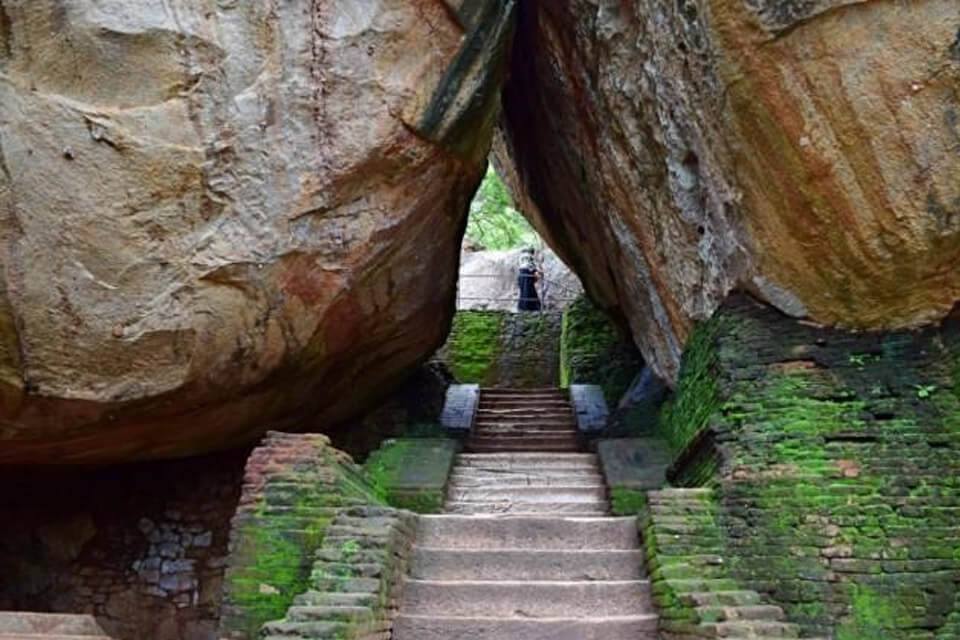It is the rock castle known as the “Eighth Wonder” by some. The 200-meter-tall Sigiriya rock rises above the dense vegetation in Sri Lanka’s central lowlands. During the third century, its caverns housed Buddhist monastic monks. In the 5th century, King Kashyapa transformed it into an outstanding castle in order to protect himself from opposing armies. It is the most well-known UNESCO World Heritage Site in the Cultural Triangle of Sri Lanka. Only the paws of a giant lion statue stood at the entryway leading up to galleries and staircases. The top of the cliff, scattered with palace remains, offers views of the surrounding foggy forests and hills.

These vibrant paintings, showing lovely maidens clutching flowers and placed in the sheer rock face, used to span the whole western wall.

This polished wall is adorned with old visitor inscriptions and poetry dating back to the 8th century, many of which praise the paintings and the fortress.

Sigiriya’s grounds are made up of a variety of water gardens that are still in use. Curved tanks, swimming pools, and little islands are examples of these.

There are numerous big stones connected by twisting paths. The garden stretches from the northern to the southern slopes of the Rock.

From the Boulder Gardens’ walkways to the Rock’s entrance, these form a succession of terraces. The garden is built with bricks and limestone.

Exhibits in the museum include unearthed items and reconstructions of portions of the Rock. Its atrium provides a spectacular view of the real Rock.